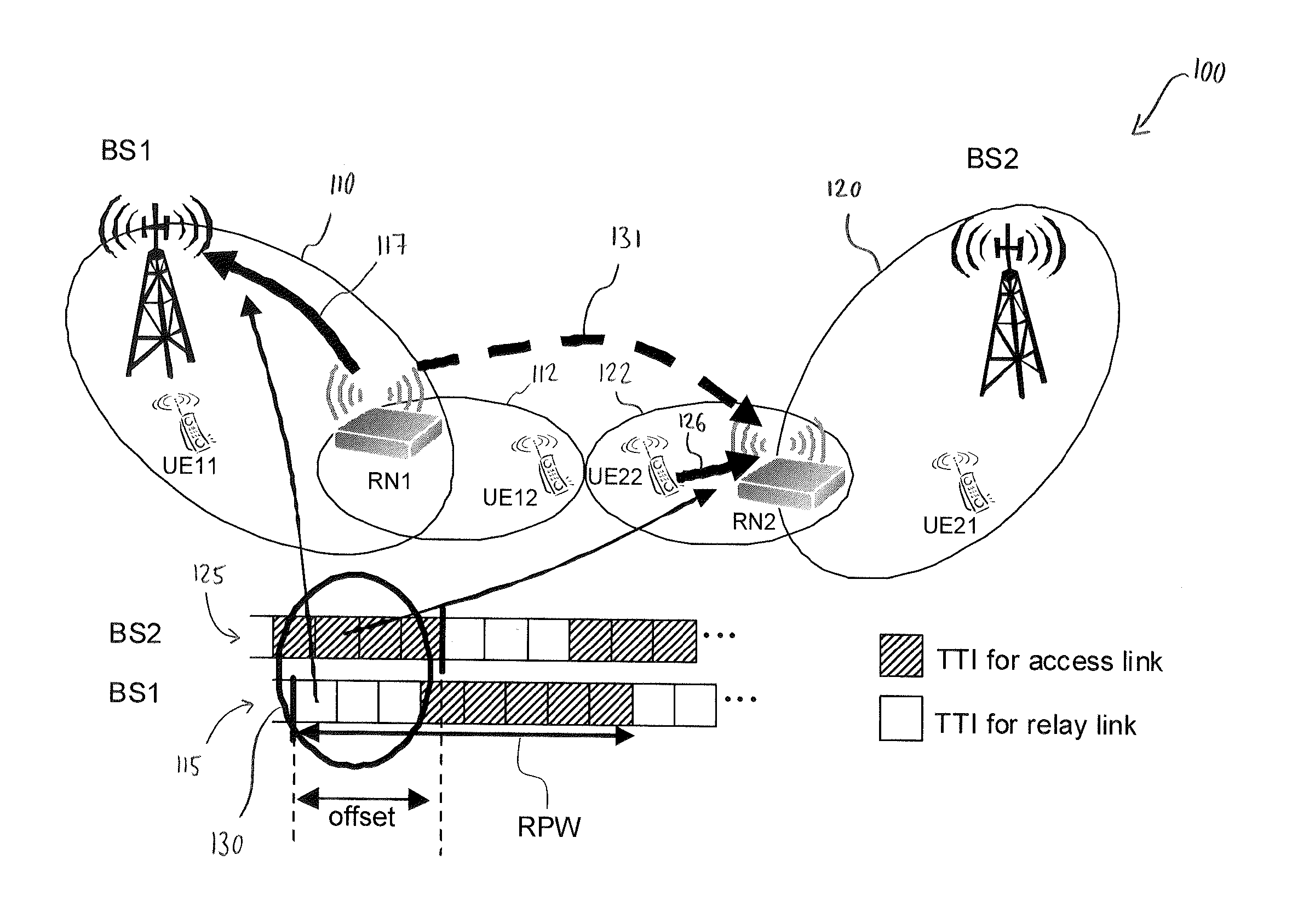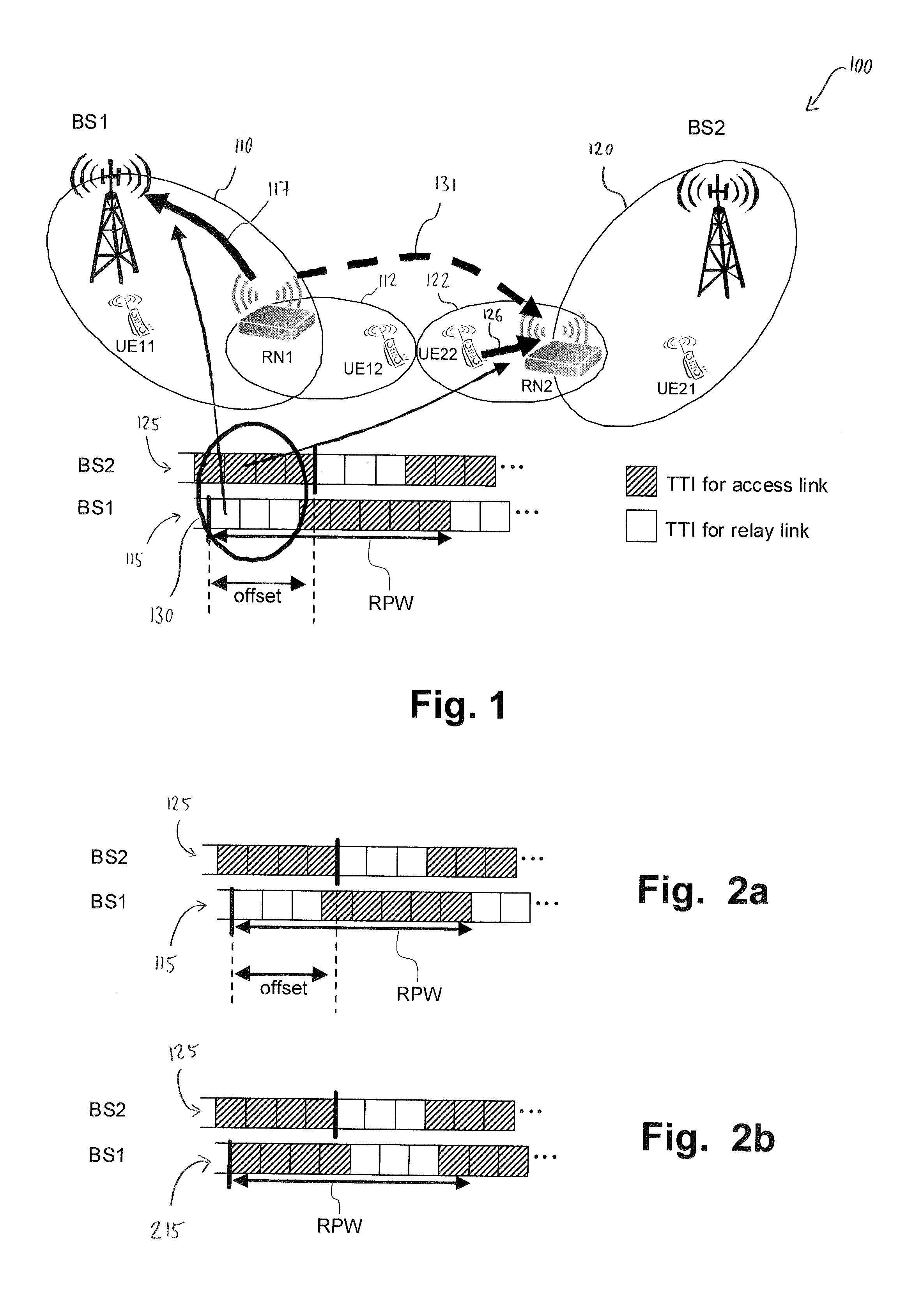Coordinating Radio Resource Partitioning in a Relay Enhanced Telecommunication Network
- Summary
- Abstract
- Description
- Claims
- Application Information
AI Technical Summary
Benefits of technology
Problems solved by technology
Method used
Image
Examples
Embodiment Construction
[0059]The illustration in the drawing is schematically. It is noted that in different figures, similar or identical elements are provided with the same reference signs or with reference signs, which are different from the corresponding reference signs only within the first digit.
[0060]FIG. 1 shows a detail or a section of a relay enhanced cellular telecommunication network 100. The telecommunication network 100 comprises a first cell 110 being assigned to a first base station BS1 and a second cell 120 being assigned to a second base station BS2.
[0061]A first relay node RN1 is connected to the first base station BS1. The first relay node RN1 defines a first relay cell 112, which extends the spatial coverage of the first cell 110. A user equipment UE11 is directly connected to the first base station BS1 via a so called direct link. A user equipment UE12 is connected to the first relay node RN1 via a so called access link. The first relay node RN1 is connected to the first base station...
PUM
 Login to View More
Login to View More Abstract
Description
Claims
Application Information
 Login to View More
Login to View More - R&D
- Intellectual Property
- Life Sciences
- Materials
- Tech Scout
- Unparalleled Data Quality
- Higher Quality Content
- 60% Fewer Hallucinations
Browse by: Latest US Patents, China's latest patents, Technical Efficacy Thesaurus, Application Domain, Technology Topic, Popular Technical Reports.
© 2025 PatSnap. All rights reserved.Legal|Privacy policy|Modern Slavery Act Transparency Statement|Sitemap|About US| Contact US: help@patsnap.com


